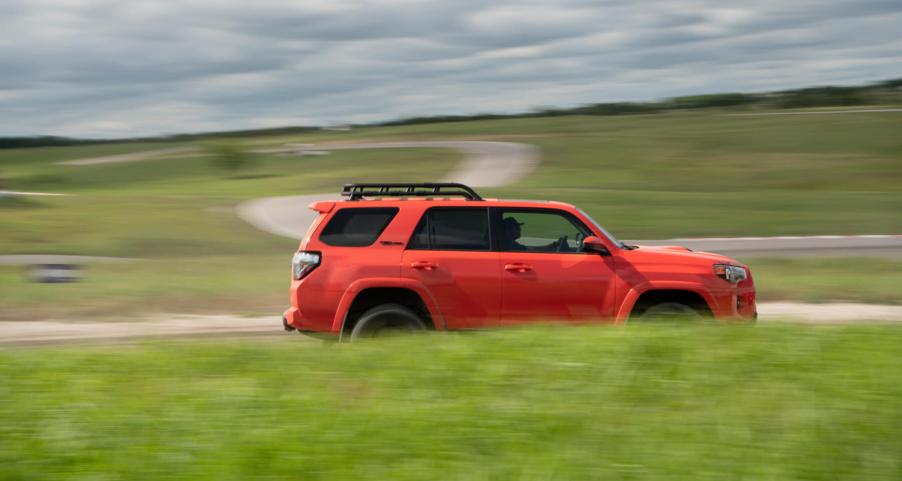
Toyota 4Runner Safety: Is It Too Old?
Toughness? Sure. Capability? Indeed. Safety? Maybe. The Toyota 4Runner’s old-school design and durability are precisely what make it popular among SUV enthusiasts. The rugged 4×4 hasn’t had a meaningful update since 2010, keeping the reliable 4Runner popular among drivers who want simplicity and durability over technology or refinement. But while the 4Runner’s aging platform has helped build its reputation for reliability, some may wonder if it has fallen behind in safety. Can an SUV that saw its last redesign in 2010 keep up with modern safety standards? Check out the results of some 4Runner crash tests below.
Most IIHS Toyota 4Runner safety testing is nearly a decade old
According to the Insurance Institute for Highway Safety (IIHS), the Toyota 4Runner safety testing hasn’t had a significant update in almost a decade. Most new vehicles on the market have frequent testing with organizations like IIHS. These entities conduct thorough tests for each model on the road to help consumers make better decisions and help verify the roadworthiness of different nameplates. Most vehicles get new testing every few years with added safety features or complete redesigns. But that’s not the case for the 2023 Toyota 4Runner.
IIHS has safety and crash test ratings for the 2023 4Runner – but the results came from testing on 2010, 2013, and 2014 models. That’s because Toyota has not substantially improved or updated the SUV’s safety features since then. A 2023 4Runner is essentially the same as a 2014 model. While that timeline may appear to serve its reliability well, it also means the truck lacks the modern safety engineering and technology that rivals have gained. The result for the 4Runner is a mixed bag of safety ratings.
Toyota 4Runner safety strengths

The new 4Runner fared well in some areas of IIHS safety testing. According to its tests, the 4Runner gets “Good” ratings in the following areas.
- Head Restraints and Seats
- Roof Strength
- Side Impact
- Moderate Front Overlap
One section, in particular, shows some substantial safety weaknesses of the 4Runner. IIHS rates the 4Runner’s driver-side small front overlap safety as “Marginal.” The ratings specifically call out the SUV’s structure and safety cage as “Poor” – likely in reference to the 4Runner’s traditional body-on-frame engineering.
Rollover safety has been a point of contention for SUVs over the years. They sit taller and have higher centers of gravity than other vehicles. But according to the National Highway Traffic Safety Administration, the Toyota 4Runner does not have a high rollover risk. According to the administration, the 4Runner did not tip during testing. NHTSA offers less than a 25 percent chance of rollover risk.
Is the 2023 Toyota 4Runner safe?
There are clear safety pros and cons for the new 4Runner. On the one hand, the 2023 4Runner benefits from its truck-based design. It provides a high seating position that may help some drivers with general visibility. Plus, its ladder-frame design means there’s plenty of sturdy steel underneath. On the other hand, the 4Runner lacks some of the industry’s newer chassis safety engineering advancements and active driver-safety technology. 4Runner drivers don’t have the benefits of automatic braking or lane centering – features that have become standard on most new SUVs.
Many expect a fully redesigned new 4Runner to arrive in the next few years. If it’s genuinely a ground-up update, then it’s pretty likely the new 4Runner will have substantial safety upgrades. We’ll have to manage with the current 4Runner’s mixed safety ratings until then.


